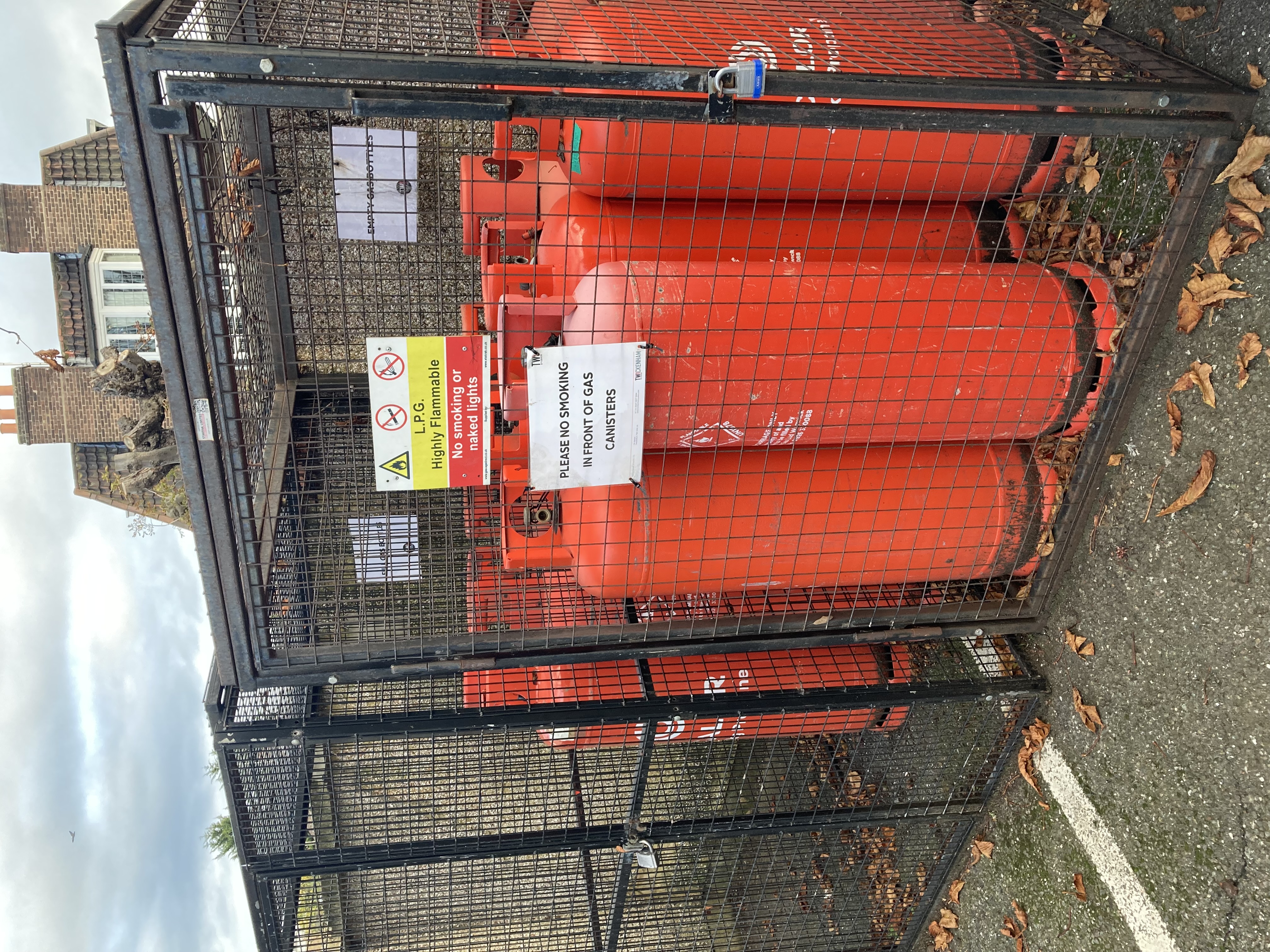Title Page
-
Monthly inspection of flammable gas storage areas
Monthly Checks
Oxygen and Flammable Gas Storage
-
Please read and understand the standard for storage of Oxygen and flammable gas cylinders and tick checkbox and answer all questions
-
Please read and understand the standard for storage of Oxygen and Flammable Gas Cylinders and tick checkbox and answer all questions
-
Requirements of the Standard
The requirements for use and storage of Oxygen and Flammable Gas Cylinders include:
That oxygen and flammable gas cylinders are stored in an upright position in clearly identified and well ventilated storage areas that are kept free from any flammable fumes and materials, electrical apparatus and wiring, and that the stored cylinders are protected from any heat sources in excess of 55deg C
Stored oxygen cylinders shall be kept separate from flammable gas cylinders by;
a) A space of at least 6m; or
b) A 1.5m high non-combustible barrier with a fire resistant rating of at least 30-minutes
Flammable gas cylinders shall be clearly labelled as to the identity of the gas and any cylinder that is not clearly labelled shall not be used
Oxygen and flammable gas cylinders shall be transported in an upright position and properly secured on a special carrier or container designed for the purpose and the cylinders shall be fitted with securely fastened approved valve protection caps
Where cylinders of gas are used for supply of welding or cutting equipment, precautions are taken to avert the possibility of damage to the equipment by;
a) Securing the cylinders so as to prevent their falling at any time while in use, and
b) Protecting the cylinders, regulators, manifolds, hoses and fittings used in conjunction with the welding or cutting equipment from sparks, flames or other hazards that could come into contact with the cylinders, regulators, hoses and fittings.
Before any gas welding, cutting or heating equipment is used, the person using the equipment shall ensure that it is free from defects and leaks and that;
a) Only standard fittings designed and manufactured for the specific gas services are used,
b) Flashback arrestors shall be installed on each regulator to prevent reverse gas flow,
c) No copper fittings or tubing are used on the flammable gas line system,
d) The oxygen cylinder, valves regulators and fittings are protected from coming into contact with any oil or grease from any source
e) Any flammable gas cylinders that have been laid on its side shall be placed in an upright position for at least 30-minutes before high pressure valve is opened for use
f) Cylinders inspected for any defects, and
g) All cylinders have been hydrostatic tested, inspected and date stamped for compliance within the last 5 years.
High pressure valves on the oxygen cylinders and flammable gas cylinders must be closed when welding, cutting, brazing or heating activities are complete
When a cylinder;
a) Is being moved or is not in use, the regulators and gauges are removed and the valve protection cover or cap is secured on the cylinder, and
b) Is used in a shop or plant, the regulators and gauges may remain on the cylinder if it is protected and secured in a specifically designed cart or storage area
c) Is stored and not in use, it is to be labelled either empty or full by attaching a tag around the neck of the cylinder to indicate this or stored in designated and labelled storage areas indicating either empty or full.
A second person must be present when oxygen and flammable gas high pressure cylinders are set up, to assist with shut off in case of emergency;
a) In a position that is not readily accessible to the person welding, cutting, brazing or heating, or
b) In a conveyance where a person is welding, cutting brazing or heating on or from the conveyance. -
Is the gas cylinder storage area clearly identified and "No Smoking" signs present?<br><br>
-
Is the storage area well ventilated?
-
Do electrical apparatus' or wiring pose any potential hazard?
-
Are there any combustible materials in the area?
-
Are all cylinders stored in an upright position?
-
Are cylinders protected from heat sources in excess of 55 degrees C?
-
Are gas cylinders labelled with dangerous goods labels?
-
Are cylinders kept clear of, or protected from any sparks, flames or other hazards?
-
Are oxygen cylinders and flammable gas cylinders are separated by at least 6m of 1.5m high non-combustible barrier with a fire resistant rating of at least 30 minutes?
-
MSDS (Data Sheets)are available for all types of gas cylinders in storage?<br>
Requirements of individual Cylinders ( In Storage and In Use)
-
Are oxygen and flammable gas cylinders transported in an upright position , properly secured to a carrier designed to transport cylinders with caps securely installed?
-
Have cylinders been hydrostatic tested and stamped within the last five (5) years?
-
Are cylinders not in use labelled "Empty" or stored appropriately?<br>
-
Are cylinders not in use capped and secured in an upright position?
-
Are oxygen cylinders, valves, and regulators free from grease or oil?
-
Are high pressure gas hoses and cylinders in good working condition with no leaks?
-
Are valves closed when cylinders are not in use?
-
Are proper fittings being used for the type of gas? <br>Flammable gas cylinders should use copper fittings only.
-
If any statements above have been checked "no", please put controls in place and correct hazards immediately to ensure compliance with DDMI Oxygen and Flammable Gas Cylinder Standard.
-
Any Comments
-
Checked By Name
-
Date of inspection
-
Signiture









